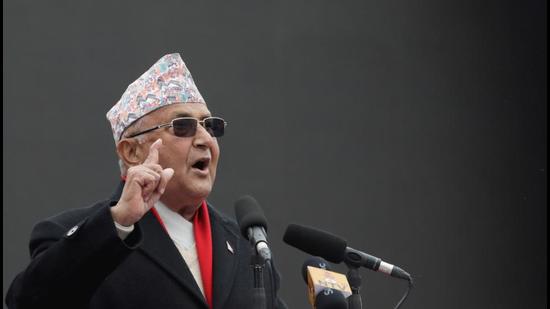The story of Kathmandu’s long quest for deeper engagement with Beijing
China’s own limitations in the Himalaya had prevented it from becoming the alternative to India in the country. Until now
In December 1975, as relations between the United States (US) and the People’s Republic of China (PRC) began to normalise, Chinese leader Deng Xiaoping had a long conversation with American President Gerald Ford about the state of affairs in South Asia. Sikkim had been annexed by India a few months previously, and Ford asked Deng whether Nepal faced any similar threats from India. Deng replied, ‘Nepal itself feels the threat, but at the moment there are no indications that India will make open military actions… I believe that you can do more things with Nepal… We have established good relations with Nepal — we have mutual confidence — but what we can do is quite limited. Perhaps things will get better when our railroad into Tibet is accomplished.’

The Qinghai-Tibet Railway (QTR) opened its line to Lhasa in 2006, almost three decades to the day Deng spoke presciently about China’s role in Nepal. But as much as the Lhasa-Kathmandu Highway in the 1960s signalled the PRC’s intention to overcome the “magnificent frontier”, as Jawaharlal Nehru termed the Himalaya in his famous 1950 speech to the Indian Parliament, the QTR did much more to smoothen the path for China into Nepal. For, immediately Nepali policymakers began to believe a train could eventually make its way from Lhasa to Kathmandu. By 2008, Nepal had requested China to extend the line from Shigatse to the border, which a high-ranking Chinese official at the time called “a beautiful dream in Nepali hearts”.
Nonetheless, China’s new infrastructure capabilities in the Himalaya had made it clear to Nepal that Beijing could finally be the alternative to Delhi — politically and economically — as Kathmandu had long sought.
In the past few years, there has been an intense scrutiny of China’s new presence in Nepal at the cost of Indian influence. Chinese investments have increased in the country, with China now the largest foreign investor. There is also increased people-to-people contact, with a growing number of Nepalis now studying in China and Chinese tourists visiting the country.
Further, China was said to have encouraged the merger of two major communist forces into a unified Nepal Communist Party (NCP), now disbanded by the Supreme Court. The NCP had established formal relations with the Chinese Communist Party, and had also decided to train its cadres in “Xi Jinping Thought”.
Such extensive bonhomie was said to have been motivated by what Nepal views as the “unofficial” Indian blockade in 2015, when Kathmandu determined it was essential to break free of India’s economic stranglehold over Nepal. Similarly, when the 2020 border dispute broke out, senior Indian officials appeared to suggest that Nepal had protested at the behest of China (without explaining that the roots of the dispute go back much further).
In November 2020, as prime minister KP Oli faced intense opposition within his party, Delhi signalled it was willing to do business by sending several high-ranking dignitaries to Kathmandu, and then inviting the foreign minister to minister-level talks despite Oli disbanding the Parliament. It seemed India had once again taken the lead in Nepal, with China’s focus on the NCP blinding it to the turbulence of domestic Nepali politics.
However, this kind of reading misses the point entirely, focusing merely on short-term outcomes. For, as I suggest in my new book All Roads Lead North, a closer reading of history will show Nepal has long desired to break free of the “special relationship” it has with India — which is read alternatively in Kathmandu as an encroachment of Nepal’s sovereignty as well as Delhi putting its weight behind Nepali political actors it deems amenable to its interests.
China’s own limitations in the Himalaya had prevented it from becoming the alternative to India in the country. Until now. With its new push towards infrastructure, however, and the decision to invest nearly $30 billion in Tibet in the new five-year-plan (which includes bringing the Tibet train to Gyirong, at the border with Nepal), it seems such limitations are a remnant of the past.
Amish Raj Mulmi is an editor and commentator, and the author of All Roads Lead North: Nepal’s Turn to China
The views expressed are personal



